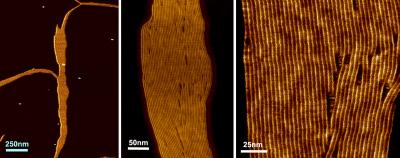Taking a leaf out of nature’s book, a team of multinational researchers have engineered synthetic pores that imitate natural pores in the human body. Pores or cellular ion channels play an important role in human health by controlling the type of substances that go through the cells.
 Artificial ion channels (Credit: Bing Gong, University at Buffalo)
Artificial ion channels (Credit: Bing Gong, University at Buffalo)
The synthetic pores are not permeable to lithium and sodium ions but allow water and potassium ions to pass through.
Dr. Bing Gong, lead author of the study and chemistry professor at University at Buffalo, stated that this property of selective permeability at such high degrees is unexpected from a synthetic structure albeit being common in naturally occurring structures. The study results could pave the way for new technologies and the pores could find application in treatment of tumors, water purification and treatment of other diseases by controlling the entry of materials within cells.
The synthetic pores were synthesized by driving donut-shaped molecules known as rigid macrocycles to stack up on top of one another. Hydrogen bonding was employed to sew the stack of molecules together. The end result was a nanotube with a pore measuring less than 1 nm in diameter. The self-assembly process of the stacks produces nanotubes of uniform diameter measuring 8.8 angstroms.
The team will carry out further research to understand the characteristics that decide the transport of substances through the pores and will make adjustments to the structure to make it permeable to selected materials.